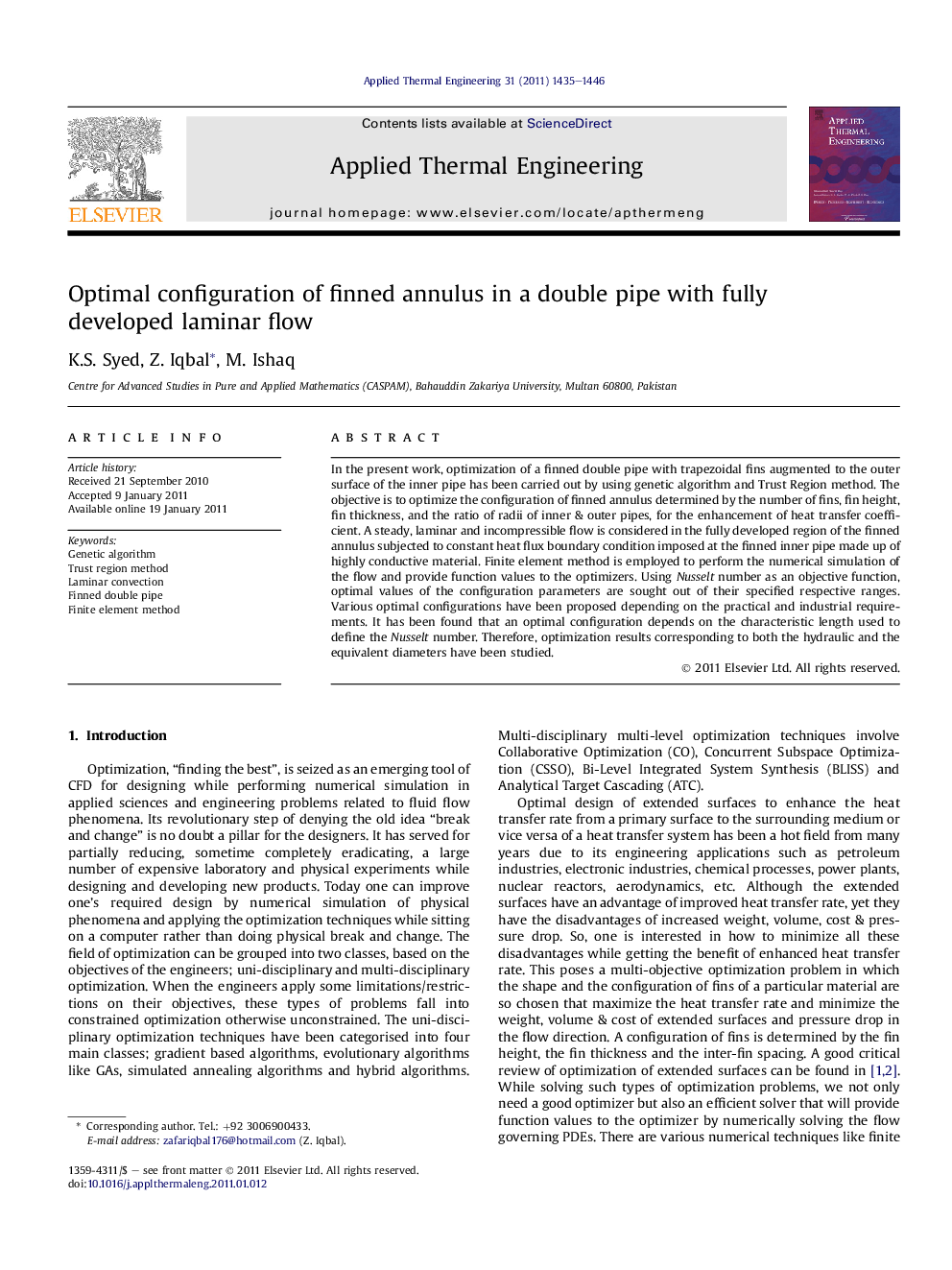| Article ID | Journal | Published Year | Pages | File Type |
|---|---|---|---|---|
| 647905 | Applied Thermal Engineering | 2011 | 12 Pages |
In the present work, optimization of a finned double pipe with trapezoidal fins augmented to the outer surface of the inner pipe has been carried out by using genetic algorithm and Trust Region method. The objective is to optimize the configuration of finned annulus determined by the number of fins, fin height, fin thickness, and the ratio of radii of inner & outer pipes, for the enhancement of heat transfer coefficient. A steady, laminar and incompressible flow is considered in the fully developed region of the finned annulus subjected to constant heat flux boundary condition imposed at the finned inner pipe made up of highly conductive material. Finite element method is employed to perform the numerical simulation of the flow and provide function values to the optimizers. Using Nusselt number as an objective function, optimal values of the configuration parameters are sought out of their specified respective ranges. Various optimal configurations have been proposed depending on the practical and industrial requirements. It has been found that an optimal configuration depends on the characteristic length used to define the Nusselt number. Therefore, optimization results corresponding to both the hydraulic and the equivalent diameters have been studied.
Research highlights► Optimal configurations of finned ducts depend on the choice of characteristic length. ► Optimal configurations have a range to be chosen out of it to meet other criteria. ► Optimal fin height and thickness depend on the choice of duct size and number of fins.
